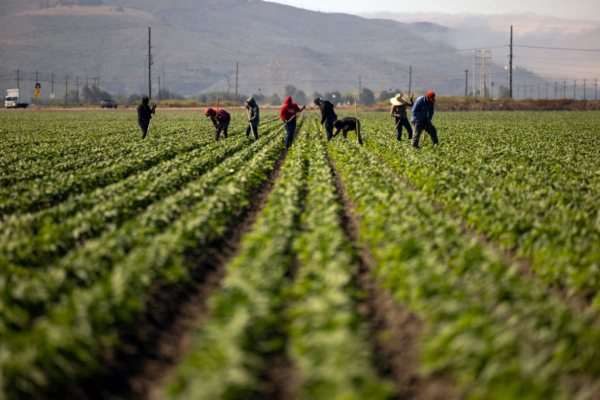On Tuesday (24th), Governor Newsom came to Fresno in the San Joaquin Valley, California to sign two bills increasing economic housing opportunities for migrant agricultural workers and one bill protecting their health and safety. The governor signed a total of 44 proposals that day.
Agricultural workers are the backbone of California’s leading agricultural industry in the United States, playing a crucial role in ensuring stable food supplies for the state, the country, and the world. “Investing in their well-being is investing in California’s success. All families should have access to safe and stable housing,” Newsom said.
AB2240, proposed by Democratic Assemblyman Joaquin Arambula of the 31st District along with 6 other Democratic legislators, passed in the Senate and Assembly with votes of 31:8 (1 absent) and 72:0 (7 absent), respectively.
This bill requires the California Department of Housing and Community Development (HCD) to update the definition of “migratory agricultural worker” by January 1, 2026, and submit a report by July 1, 2027, analyzing the feasibility and impact of converting immigrant services office center (OMS) housing units for year-round availability.
According to the proponents, since 1965, California has provided seasonal rental housing for migrant agricultural workers and their families from 4/5 months to 10/11 months. Most migrant agricultural workers are now families rather than single men; however, under current laws, they must spend at least 3 months residing over 50 miles away from the OMS migrant agricultural worker centers with immediate relatives within the first 6 months to qualify for housing.
AB2240 aims to eliminate this requirement to “ensure that farmworkers and their families are not separated due to outdated policies and to ensure that their children’s education is not disrupted.”
Currently, there are 24 OMS migrant agricultural worker centers in 15 counties in California, providing accommodation for approximately 7,000 farmworkers annually. According to the U.S. Department of Labor, around 92% of California farmworkers settled in the state from 2019 to 2020.
The State Assembly expects to allocate $500,000 to $1.2 million in general funds annually over a six-year period to increase personnel for housing programs. By January 1, 2031, in addition to the current $5.6 million allocation, an additional $4 million per year will be allocated for the operation costs of year-round housing at OMS centers.
AB3035, proposed by Democratic Assemblywoman Gail Pellerin of the 28th District, aims to streamline the approval process for farmworker housing in Santa Clara and Santa Cruz counties, and reduce cumbersome regulations to expedite housing development.
AB3035 passed in the Senate and Assembly with votes of 40:0 and 77:0 (2 absent), respectively. The bill allows for the construction of farmworker housing in designated agricultural areas and raises the housing capacity limit from 36 to 150 units.
SB1105, initiated by Democratic Assemblyman Steve Padilla of the 18th District, passed in the Senate and Assembly with votes of 37:2 (1 absent) and 72:0 (7 absent), respectively.
The 2014 AB1522 “Healthy Workplaces, Healthy Families Act” mandates that California employees accrue 1 hour of paid sick leave for every 30 hours worked within a year of working for the same employer for at least 30 days post-employment commencement.
The SB616 law, effective in 2024, defines “full sick leave” as 5 days or 40 hours of paid sick leave, which can be accumulated and carried over as per regulations. Employers are prohibited from denying employees the right to use accumulated sick leave and cannot terminate, demote, or discriminate against employees for using accumulated sick leave.
The latest SB1105 requires that if agricultural employees work outdoors or apply for sick leave due to smoke, high temperatures, floods caused by emergencies, or for preventive care needs, employers must provide paid sick leave.
Padilla stated that as a leading agricultural state in the United States and the largest food-producing state globally, California farmworkers play a crucial role. However, their likelihood of dying from heat-related causes is 35 times higher than workers in other industries. Due to heat waves, wildfires, and extreme rainfall events, farmworkers will continue to face the risk of death.
“Yet they still face some disadvantages compared to other populations. Many cannot access healthcare and other critical safety net services,” he said. “Farmworkers cannot enjoy the same protections as workers in other industries mainly due to their immigrant status.”

